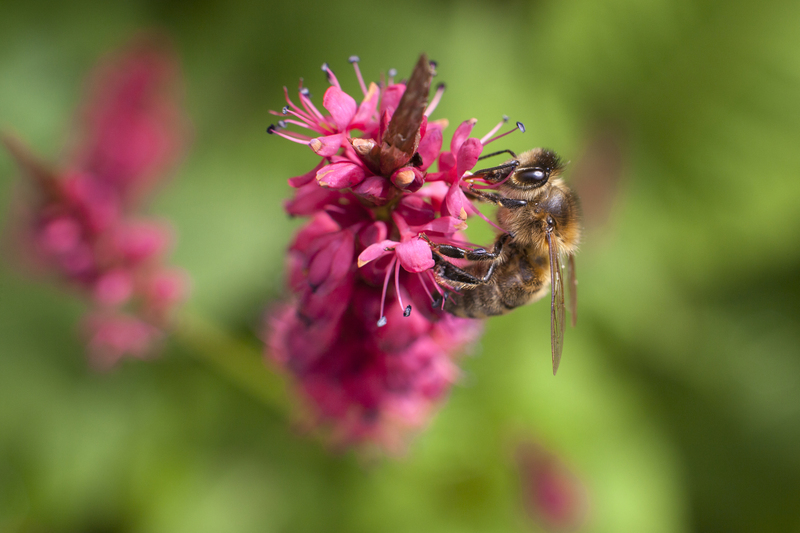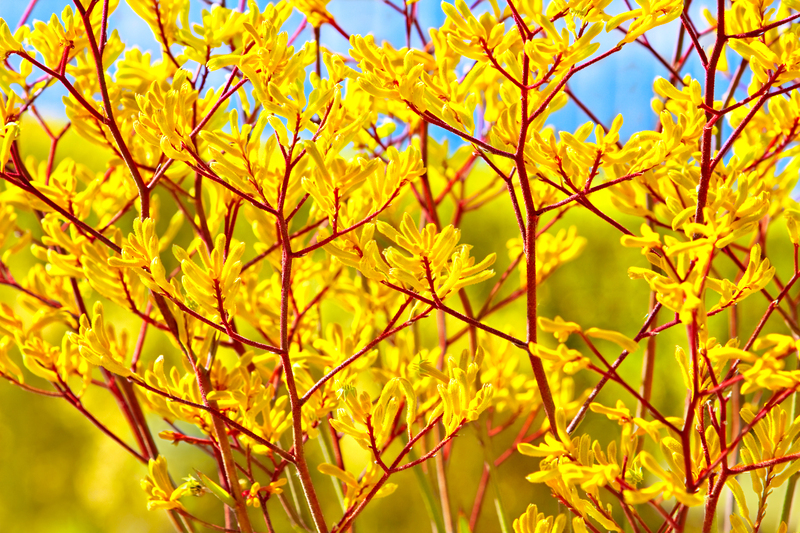Green Walls and Vertical Gardening Adventures
Posted on 03/07/2025
Green Walls and Vertical Gardening Adventures: Transform Your Space Into a Living Oasis
In the quest to bring more greenery into urban environments and add a splash of freshness to our interiors, green walls and vertical gardens have become architectural and gardening trends that ignite excitement and foster eco-friendly living. This comprehensive guide delves deep into the world of living walls, their benefits, different approaches, essential maintenance tips, and inspiring ideas to kickstart your own adventure with vertical gardening.

What Are Green Walls and Vertical Gardens?
Green walls--frequently called living walls, vertical gardens, or living green facades--are vertical structures featuring plants grown on or within them, either indoors or outdoors. This innovative gardening technique uses various systems to support plant growth on flat or curved surfaces, offering a sustainable solution where traditional gardening may not be practical.
- Indoor green walls enhance air quality and aesthetics in homes and offices.
- Outdoor vertical gardens help cool buildings, support biodiversity, and reduce pollution.
- Modular systems allow for creative layouts and easy installation on almost any wall, making green wall gardening accessible to anyone.
Benefits of Green Walls and Vertical Gardening
Incorporating vertical gardens and living green facades into your environment offers multiple advantages for both individuals and communities. Here are some of the top benefits:
1. Enhanced Aesthetics
- A lush, living wall is a stunning feature, bringing a natural, vibrant look to urban landscapes or interior spaces.
- Vertical greenery softens harsh structural lines and turns dull walls into pieces of living art.
2. Improved Air Quality
- Plants in green walls help filter pollutants, remove toxins, and produce oxygen.
- This air-purifying effect is especially valuable in city environments or congested interiors.
3. Maximized Space Usage
- Vertical gardening makes use of unused vertical surfaces, perfect for small yards, patios, balconies, or even offices.
- Edible vertical gardens let you grow fresh herbs, vegetables, or strawberries in the tiniest of spaces.
4. Natural Insulation and Energy Efficiency
- Green facades help regulate building temperatures, lowering cooling needs in summer and providing extra insulation in winter.
- This can reduce energy bills and decrease your environmental footprint.
5. Biodiversity Support
- Outdoor living walls create microhabitats for pollinators, birds, and beneficial insects.
- They support urban ecological networks and reconnect city dwellers with nature.
6. Stress Reduction and Well-being
- Research shows that exposure to greenery, even indoors, reduces stress, improves mood, and fosters creativity.
- Living green walls can transform stark office environments into tranquil, productive spaces.
Types of Green Walls and Vertical Garden Systems
When embarking on your vertical gardening adventure, it's essential to understand the available systems. Each has unique characteristics, suited for different spaces and needs.
1. Green Facades
- These walls rely on climbing plants like ivy, jasmine, or honeysuckle.
- Plants grow directly in the ground or large containers and scale up wireframes, trellises, or mesh supports attached to walls.
- Grass facades require minimal irrigation and are ideal for outdoor vertical gardening.
2. Living Wall Systems
- Modular panels with soil, felt, or hydroponic media house a wide range of plants.
- These living walls can be prefabricated or custom-built for both indoor and outdoor use.
- Many feature integrated or drip irrigation systems for easy maintenance.
3. Pocket Planters and Felt Walls
- Soft felt "pockets" hung on walls provide space for individual plants, allowing for maximum creativity.
- This type is popular in DIY vertical gardening projects because it's affordable and flexible.
- Simple to expand or rearrange as your collection grows.
4. Freestanding Vertical Gardens
- Moveable walls or divider systems, ideal for adding privacy or greening open-plan areas.
- These structures can be easily adjusted, making them perfect for rental properties or outdoor events.
5. DIY Vertical Garden Ideas
- Repurposed palettes, shoe organizers, old gutters, or stacked pots all make creative, budget-friendly supports for vertical planting.
- Perfect for starting small or experimenting before committing to a permanent installation.
How to Build Your Own Vertical Garden
Step-by-Step Vertical Gardening Guide
- Assess Your Space: Is your chosen wall indoors or outdoors? What is the light exposure and microclimate?
- Choose the Right System: Decide between a pocket system, modular panels, trellises, or a DIY upcycled solution.
- Prep Your Surface: For indoor walls, install a waterproof barrier first to prevent moisture damage. For outdoors, ensure the wall is structurally sound.
- Install the Support: Attach your vertical planter, frame, or panel securely. Make sure to account for the weight of wet soil and mature plants.
- Add Planting Medium: Choose lightweight, nutrient-rich soil or use hydroponic mats based on your system type.
- Select Plants: Opt for species that will thrive given your light, humidity, and temperature conditions. Group plants by similar care needs.
- Plant and Arrange: Experiment with color, texture, and growth habits for a dynamic look. Leave space for plants to mature.
- Irrigate: Set up a drip or self-watering system, or hand-water as needed. Consistent hydration is crucial for success.
- Maintain and Enjoy: Prune, fertilize, and check for pests regularly to keep your living green wall flourishing.
Best Plants for Green Walls and Vertical Gardens
Selecting the right plants is key to a healthy, eye-catching vertical garden. Consider mixing evergreen foliage, flowering varieties, and edible plants.
- Ferns: Boston ferns, Maidenhair ferns--thriving in shaded, high-humidity environments.
- Pothos & Philodendrons: Low-maintenance vines for indoor vertical green walls.
- Succulents: Echeveria, sedum--ideal for sun-drenched, low-water walls.
- Herbs: Basil, oregano, mint, and chives for edible living walls.
- Flowering plants: Begonias, impatiens, and nasturtiums add pops of color and attract pollinators.
- Native species: Encourage local biodiversity and require less maintenance.
Maintaining Your Living Wall
Essential Vertical Garden Care Tips
- Irrigation:
- Check soil or felt regularly to ensure consistent moisture--avoid under- or overwatering.
- Automated drip systems are effective for larger installations.
- Pruning:
- Regular trimming keeps plants healthy and maintains the shape of your garden wall.
- Fertilization:
- Use liquid or slow-release fertilizers suited for your chosen plant species.
- Pest & Disease Control:
- Monitor for pests like aphids or fungal issues, especially in humid environments.
- Use organic solutions to keep your vertical ecosystem healthy.
- System Checks:
- Examine structural supports and irrigation pipes regularly for wear and leaks.
Vertical Gardening Inspiration: Creative Ideas
1. Edible Living Walls
- Grow fresh herbs, salad greens, strawberries, and cherry tomatoes right outside your kitchen or on your balcony.
2. Artistic Plant Murals
- Arrange foliage of varying hues and textures to create patterns, gradients, or living works of art for unforgettable interiors.
3. Privacy Screens
- Install vertical gardens as natural privacy screens in gardens or on apartment balconies, instead of traditional fencing.
4. Green Office Features
- Add a statement green wall in your workplace lobby or meeting room. It enhances well-being and impresses visitors.
5. Pet-Friendly Walls
- Choose non-toxic, robust plants for spaces your pets frequent, turning vertical gardens into safe and stimulating environments.
Top Tips for Green Wall Success
- Start Small: Test your skills with a few modular pockets or a DIY hanging planter before scaling up.
- Research Plant Needs: Group species with similar light and water requirements together.
- Invest in Automation: Drip irrigation cuts down on maintenance and ensures consistent watering for thriving plants.
- Think Seasonally: Plan for seasonal changes and rotate plants to keep your vertical garden lush year-round.
- Enjoy the Process! Vertical gardening is a creative, rewarding adventure that transforms the ordinary into the extraordinary.

Frequently Asked Questions About Green Walls and Vertical Gardening
Q: Can I create a vertical garden if I have little sunlight?
Absolutely! Many plants like ferns, philodendrons, or mosses thrive in low to moderate light. Supplement with grow lights for indoor installations if needed.
Q: Are there easy-care options for beginners?
Yes--choose robust plants like pothos, spider plants, or succulents, and use self-watering pocket systems for hassle-free maintenance.
Q: How much does it cost to build a green wall?
Costs vary based on size, system, and plant choice. DIY vertical gardens can start as low as $50, while large, integrated living walls may be several thousand dollars.
Q: Is it possible to build a vertical garden on a balcony or patio?
Definitely! Lightweight wall-mounted systems, free-standing frames, or step planters are perfect for small outdoor spaces.
Q: What's required to maintain a vertical green wall?
Consistent watering, occasional fertilizer, pruning, and pest checks ensure healthy plants. Automated systems help simplify care for busy lifestyles.
Conclusion: Embark On Your Vertical Gardening Adventure
Green walls and vertical gardening are much more than beautiful trends--they're a way to reconnect with nature, foster sustainable living, and enrich our daily environments. Whether you're installing a lush living wall in your office, creating a culinary vertical herb garden on your balcony, or greening an uninspired fence, the possibilities are endless and deeply rewarding.
Now is the perfect time to embark on your own vertical gardening journey. Let your walls come alive--and discover just how transformative green walls and living facades can be!

